The Mishnah is the main text of the Talmud. A collection of terse teachings written in Hebrew, it was redacted by Rabbi Yehudah the Prince, in the years following the destruction of the Second Temple in Jerusalem.
The Talmud is divided into six general sections, called sedarim (“orders”), each of which is further divided into mesichtot (“tractates). Each mesichta comprises perakim (“chapters”). Every paragraph within these chapters is referred to as a mishnah.
In time, the traditions that surround and followed the Mishnah were collected into the Jerusalem and Babylonian Talmuds.
The standard edition of Mishnah is printed with classic commentaries like the writings of Maimonides (Rambam), Rabbi Ovadia of Bertinoro (Bartenura) and Rabbi Yomtov Lipmann Heller (Tosafot Yom Tov).
The Hebrew word Mishnah contains the same letters as the word neshamah (“soul”). It is therefore customary to study Mishnah in the merit of a departed loved one.










Is the Mishnah part of the “Torah”, meaning it was given to the Israelites at the time Hashem revealed Himself at mount Sinai and gave the 10 commandments?
No. The Mishnah is a collection of legal rulings of the rabbis prior to the 2nd century. The actual Mishnah was not given on Sinai, although the legal process, the methods of inferring from the text of the Torah, and the authority to make these legal rulings is from Sinai. See here
The Mishna is the Oral Torah and was given together with the Written Torah. What we often call the 10 Commandments is just part, albeit very important part, of the written Torah, which was accompanied by Oral instruction.